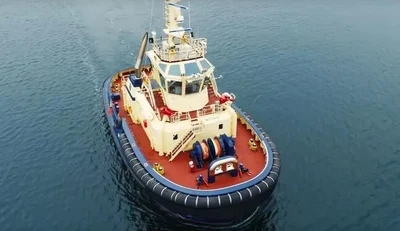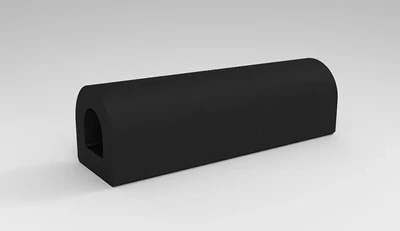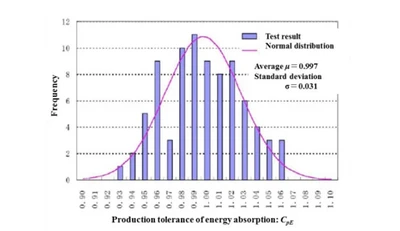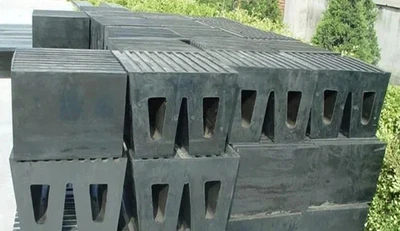The choice of rubber fender material is a technical one, allowing the selection of a variety of raw rubber and compounding agent varieties and amounts suitable for the mixing, rolling, moulding and vulcanisation processes to meet customer product requirements and develop competitively priced products.
The price, processing and performance of rubber fender materials are elements of competitiveness. In the current competitive business environment, the price of raw rubber and compatibilisers is very important. Certain rubber materials may give excellent performance to vulcanised rubber and products, but too high a price may make them uncompetitive. How to reduce product cost while maintaining performance is a common practical concern, and there are many factors that affect product cost. Therefore, when selecting rubber materials, value engineering should be fully applied to the analysis and the choice of a lower cost rubber material should be considered first on the basis of ensuring physical and processing properties.
The cost of rubber should be considered is quality standards. Rubber products are mostly sold by the number of pieces and evaluated by volume. The price per unit of volume should be minimised purely economically, and the associated process costs should also be fully considered, but always be alert to reducing the amount of expensive matching agents so as not to compromise product quality and lead to processing difficulties. Likewise, too high a design mark can not only lead to waste, but also reduce the competitiveness of the product. Often, you can choose alternative materials during design, but this needs to be carefully evaluated, including a reasonable cost calculation.
The costing of rubber materials requires three parameters.
①The amount of each component.
②The price of each component.
③The density of each component.
In order to reduce costs, the amount of filler used is generally added to the raw material. As the unit price of fillers is generally lower, the cost of rubber fenders can also be reduced
 How to regularly inspect marine rubber fenders?December 16, 2024After installing the marine rubber fender, when the ship is docked for inspection, it should be inspected every time. Regardless of whether it is parked for inspection or not, it should be inspected r...view
How to regularly inspect marine rubber fenders?December 16, 2024After installing the marine rubber fender, when the ship is docked for inspection, it should be inspected every time. Regardless of whether it is parked for inspection or not, it should be inspected r...view Stability of D-type rubber fenderDecember 16, 2024The quality of D-type rubber fenders always restricts production and use, interferes with docking and the safety of ship drivers, and affects the schedule of production ships. This is not an accidenta...view
Stability of D-type rubber fenderDecember 16, 2024The quality of D-type rubber fenders always restricts production and use, interferes with docking and the safety of ship drivers, and affects the schedule of production ships. This is not an accidenta...view Performance of rubber fendersDecember 16, 2024In the design process, the performance of rubber fenders is considered in terms of deflection-reaction force characteristics in compression and the energy absorption calculated from these characterist...view
Performance of rubber fendersDecember 16, 2024In the design process, the performance of rubber fenders is considered in terms of deflection-reaction force characteristics in compression and the energy absorption calculated from these characterist...view Unleashing the Power of Tug & Boat Rubber FendersOctober 17, 2024Tug & Boat Rubber Fenders are essential components in the maritime industry, providing critical protection for vessels during docking and maneuvering. Tonly Rubber, a reputable brand known for its...view
Unleashing the Power of Tug & Boat Rubber FendersOctober 17, 2024Tug & Boat Rubber Fenders are essential components in the maritime industry, providing critical protection for vessels during docking and maneuvering. Tonly Rubber, a reputable brand known for its...view